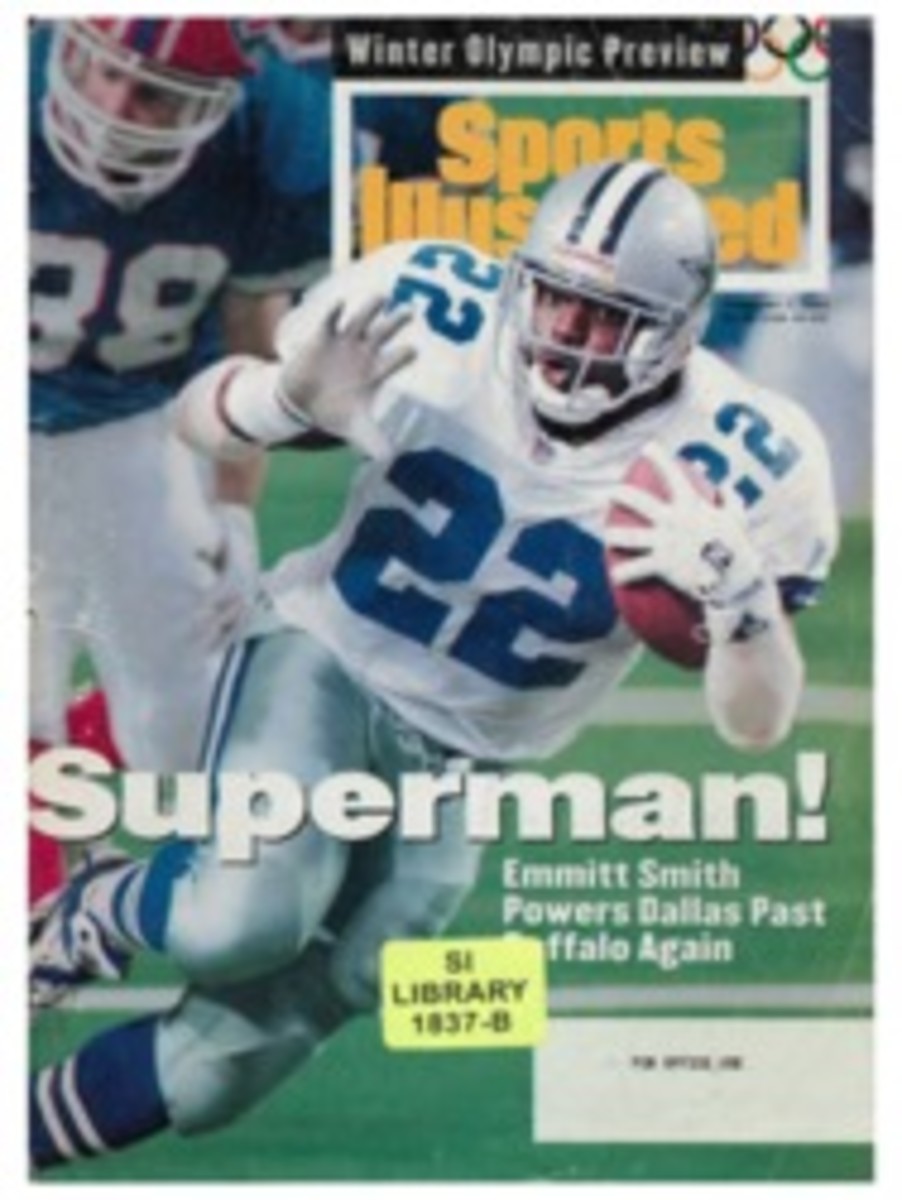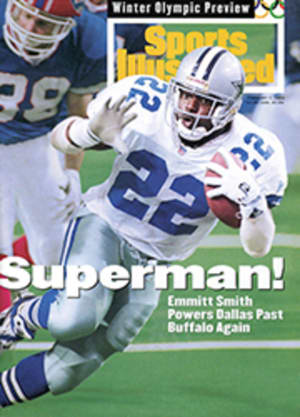
Grand Slammings
It's the thing todo at the Australian Open: Wrap yourself in a flag, drink a slab of tinnies,and barrack for your country. For years crazed Swedes with painted faces andcases of beer have chanted in the rafters after every elegant shot by StefanEdberg, and last week Japanese fans made rowdy devotions to Kimiko Date, asurprise women's semifinalist.
In the men'sfinal on Sunday, however, Pete Sampras and Todd Martin turned the event into athoroughly Yank affair. Looking like a couple of Eagle Scout poster boys intheir back-to-school haircuts, Sampras and Martin divided the vocal Americancrowd that visited Melbourne's Flinders Park. Cries of "Come on, Pete!"alternated with "Come on. Todd!" until finally a voice drifting downfrom the bleachers exhorted, "Come on, both of you!" In an absorbingand dead-even first set, the two players sent shots across the net like bottlerockets. Then Sampras pulled away from Martin as inexorably as he had from therest of the men's field, taking the first Grand Slam title of 1994 by a scoreof 7-6, 6-4, 6-4.
A little early tostart talking about Sampras's sweeping the four Grand Slam tournaments thisyear? Probably. But it's not too early to whisper. Sampras has his eyes fixedon the record book, and he has often said he would like to be mentioned in thesame breath with his hero Rod Laver, the last man to win the Australian,French, British and U.S. championships in a calendar year (1969). When askedhow he could improve on a '93 season in which he won Wimbledon and the U.S.Open and rose to No. 1, Sampras said, "Maybe win them all." That didn'tsound so audacious after his triumph Down Under.
The only personin Melbourne more overwhelming than Sampras was women's champion Steffi Graf,whose 6-0, 6-2 victory over second-seeded Arantxa Sànchez Vicario in 57 minuteslast Saturday was one of the shortest Australian finals in memory. SànchezVicario was no more than a convenient target for Graf's axlike strokes. Graf,who did not come close to losing a set in collecting her fourth straight GrandSlam crown and her 15th overall, was thrilled by her performance. "When Iplay this way, I don't care about the score or the length [of the match] orwhether it's the first round or the final." she said. "It just feelswonderful."
Graf was toopleased to reflect for long on the absence of former No. 1 Monica Seles, who'sstill inactive nine months after being stabbed by an attacker in Hamburg,Germany. But Graf admitted that she finds the game more interesting when shehas a challenge. Without Seles or Jennifer Capriati, who has taken a sabbaticalto finish high school, the women's draw seemed almost vacant.
Until, that is,Graf met Lindsay Davenport, a 17-year-old Californian who checks in at6'2". Davenport is an unselfconscious giggler who resembles Rosie O'Donnellmore than Rosie Casals. On the court, though, she has the strokes of a serialkiller. She upset sixth-seeded Mary Joe Fernandez en route to thequarterfinals, where she lost 6-3, 6-2 to Graf.
No sooner hadGraf dealt with Davenport than along came Date, who had upset third-seededConchita Martinez in the quarters. Date is an ambidextrous wonder who is farbetter than she showed in a 6-3, 6-3 loss to Graf. A resolute Japanese patriotwho has had to be ordered by the Women's Tennis Association to learn English,Date cooked her own rice lunches in Melbourne and had acupuncture in her kneesafter every match. She rose to No. 7 in the rankings with her performance inAustralia.
While Davenportand Date preoccupied Graf for only so long, Sànchez Vicario could not preoccupyher at all; she won only 12 points in getting bageled in the first set. UnlessSeles returns, Graf could repeat her 1988 Grand Slam. Indeed, she may be aneven better player than she was five years ago.
Sampras,meanwhile, played with such power and grace that the absence of Boris Becker,Andre Agassi and Michael Chang was all but forgotten. Becker was in Germanycelebrating the birth of his first child. Agassi was in Las Vegas recoveringfrom wrist surgery. Chang simply didn't want to play. Their presence wouldn'thave mattered.
The reticentSampras says he likes to do his talking with his racket. Well, then, this wasoratory. After surviving a five-set scare from an unknown Russian named YevgenyKafelnikov in the second round, Sampras noticeably improved with each match. Anindication of the exquisite form he reached was his shockingly easy 6-3, 6-4,6-4 semifinal defeat of two-time defending champion Jim Courier. Sampras hasdefeated Courier in six of their last seven meetings, leaving Courier at a lossas to what to do. "Maybe break his leg on a changeover," Couriersaid.
Martin, who wasplaying his first Grand Slam final, had no answers either. But there are signsthat the 6'6" Martin could make life difficult for Sampras in the future.In 1993 Martin rose from No. 87 to No. 13, beating five Top 10 players andreaching the Wimbledon quarterfinals. "I always believed in him,"Sampras said. "This doesn't surprise me at all."
Martin, 23, is anexample of the wealth of tennis talent that exists in the U.S. only a few yearsafter it seemed that there was no one to replace John McEnroe and JimmyConnors. Martin's development can be credited principally to two U.S. TennisAssociation coaches: Tom Gullikson, the Davis Cup captain, and Josè Higueras,who guided Chang and Courier to Grand Slam titles. Before Martin traveled toAustralia, he spent two weeks working with Higueras and Gullikson in PalmSprings, Calif., where Higueras teaches.
It has becomecommon for U.S. players to gather during the off-season in Palm Springs for amini training camp. During his recent stay there, Martin worked out withCourier, dined with him and took $30 from him on the golf course. He has alsospent time working out—and playing golf—with Sampras, who is coached by TimGullikson, brother of Tom. And Martin is a good friend and practice partner ofyet another rising American star, MaliVai Washington, who last week reached hisfirst Grand Slam quarterfinal before losing to Martin.
There is noquestion the American players have been pushing one another to greater heights.In Melbourne, moreover, Sampras and Martin worked hard to present themselves assqueaky-clean boys, the image now preferred by most U.S. players. "Give mea glass of milk and I'm happy," says Martin, who called himself simply"an ail-American kid" as he accepted the runner-up trophy.
Yet Sampras hassuffered for his good comportment. He was labeled boring by the press afterwinning Wimbledon. Just before the Australian Open began, former champion JohnNewcombe blasted Sampras for being uncharismatic, to which Sampras replied,"You won't see me cracking jokes because John Newcombe wants me to."Sampras is not only the most talented tennis player but also the nicest. Heseems intent on proving that one need not be a boor to be a great player."I'm not going to apologize for trying to do this right," he said.
Martin is no moreexciting. The only thing charismatic about him is his big, all-court game, witha 120mph serve, lashing groundstrokes and sprawling net coverage. With hisimposing wingspan Martin swoops down on the net like a pterodactyl. But evenhis game attracted little attention until recently, because he's a late bloomerwho spent two years studying linguistics at Northwestern while Sampras andCourier were hitting the tour.
If the mannerlyMartin has anything resembling a wild side, it's his passion for pocketbilliards. Whenever he goes home to Lansing, Mich., he visits Pockets, a poolhall where he enters tournaments to see how he stacks up. "I get morenervous in that than in playing tennis," he says.
He needed thesteadiest of nerves to reach the Australian final. Martin won seven of eighttiebreakers, including three in his 3-6, 7-6, 7-6, 7-6 semifinal victory overEdberg. Martin's remarkable run ended, however, in the first set againstSampras, during which Martin could not break serve despite six chances. WhenSampras won the tiebreaker, Martin's magic was gone. Sampras raced out to leadsof 4-1 in the second set and 5-1 in the third before Martin, helped by Sampraserrors, made each set respectable. Afterward the two Yank friends met at thenet and embraced. "It wasn't my day," Martin said. "But for thepast 13 days it felt like my day, so I was just glad to be around forthose."
Later Martinconsidered Sampras's chances of winning the Grand Slam. The toughest test willbe on clay at the French Open, which Sampras has yet to win. "Yeah, I thinkhe can," Martin said. "Unless this guy Martin gets in his way."
PHOTO
STEVE HOLLAND/AP
Letting his racket, not his mouth, do the talking, Sampras became more eloquent with each match.
PHOTO
RICK STEVENS/AP
Martin was Sampras's equal in etiquette but not in ground strokes.
PHOTO
RUSS ADAMS
Graf required less than one hour per match to win her fourth straight major championship.

